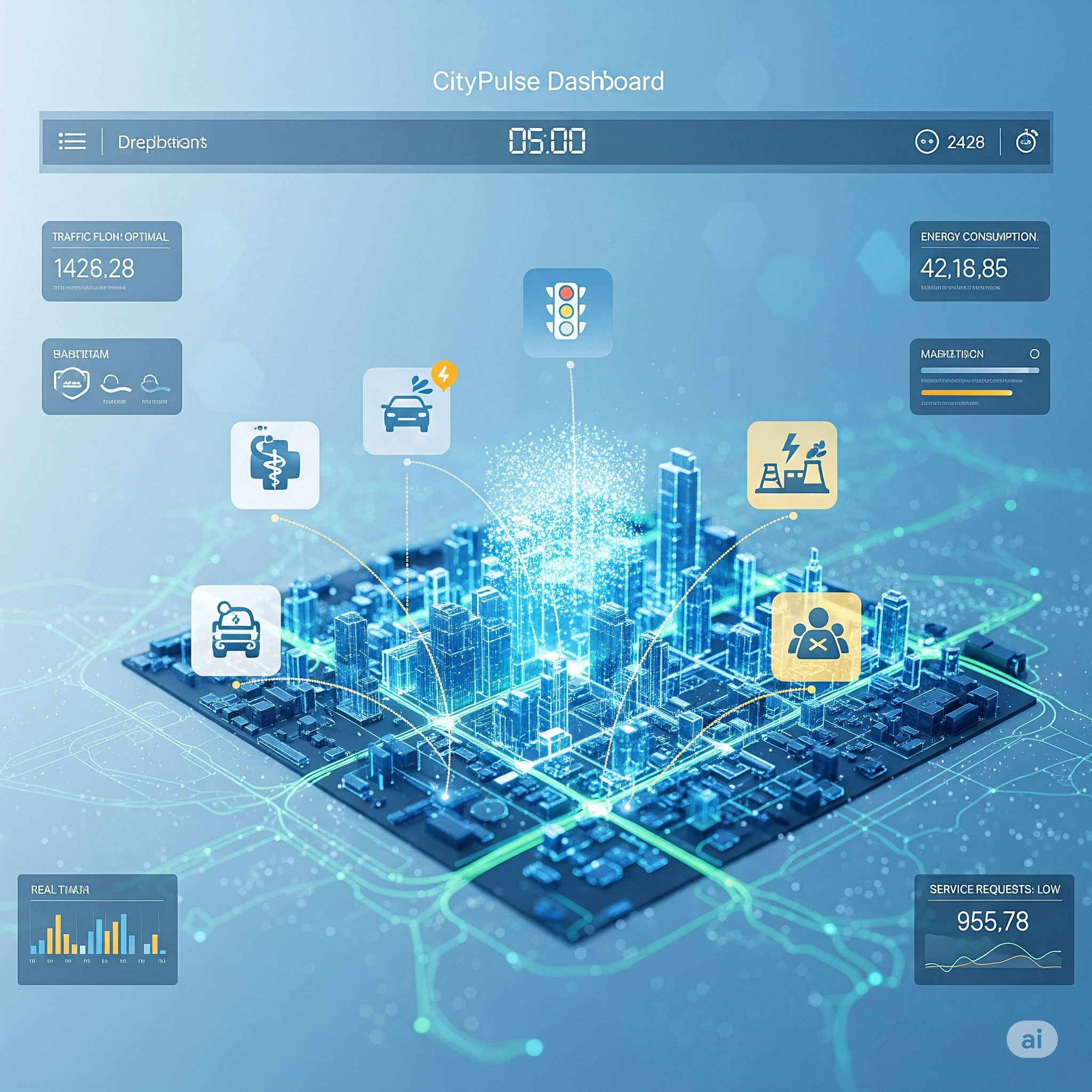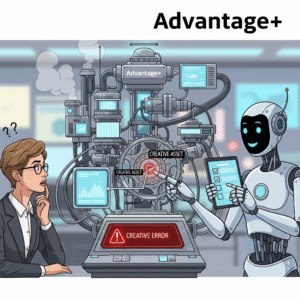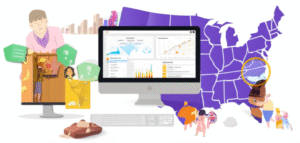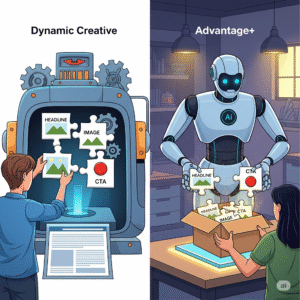We live in a world of staggering complexity. From managing public health crises and optimizing traffic in sprawling megacities to allocating resources for social programs, the challenges facing modern governments are immense. For decades, policy decisions have often relied on a combination of historical data, expert opinion, and political intuition. But what if there was a better, more precise way? What if we could predict needs before they arise, allocate resources with surgical accuracy, and build truly responsive public services? This isn’t science fiction; it’s the promise of AI public policy.
Artificial intelligence is rapidly moving beyond the confines of tech companies and into the core of our civic infrastructure. It’s a transformative force with the potential to redefine the relationship between citizens and the state. But it’s not a magic wand. Implementing AI in governance requires a thoughtful, strategic, and ethical framework—a robust AI public policy that ensures these powerful tools are used for the public good. This article will demystify the world of government AI, exploring how it’s already working, the ethical tightropes we must walk, and the tools your own organization can use to start making data-driven decisions for better governance.
What Exactly Is AI Public Policy? (And Why You Should Care)
At its core, AI public policy refers to two interconnected ideas. First, it’s about how governments use artificial intelligence and data analytics to design, implement, and evaluate their own policies and services. Second, it involves creating regulations and guidelines to govern the development and use of AI by the private sector to ensure it aligns with societal values like fairness, privacy, and security. For our purposes, we’ll focus primarily on the first definition: AI as a tool for creating a more efficient and effective public sector.
This isn’t just a topic for tech experts or high-level government officials. The decisions made through government AI can affect everything from your daily commute and the quality of your local schools to how your city responds to an emergency. Understanding the principles of AI public policy is becoming essential for every engaged citizen.
Beyond the Buzzwords: Defining AI Public Policy
When we talk about using AI in government, we’re not talking about robot mayors or sentient supercomputers making laws. Instead, we are referring to a suite of technologies that excel at finding patterns and making predictions from vast amounts of data. This includes:
- Machine Learning (ML): Algorithms that analyze existing data to forecast future trends. For example, predicting which roads are most likely to need repairs based on traffic flow, weather patterns, and age.
- Natural Language Processing (NLP): AI that understands and analyzes human language. This can be used to sift through thousands of public comments on a proposed regulation to identify key themes and concerns.
- Predictive Analytics: Using statistical models to determine the likelihood of future outcomes, helping agencies move from a reactive to a proactive stance.
A strong AI public policy creates the framework that allows these tools to be integrated into government operations safely and effectively, ensuring that the insights they generate lead to better, more equitable outcomes for everyone.
The Shift from Gut-Feeling to Data-Driven Governance
For centuries, governance has been more of an art than a science. While data has always played a role, its scale was limited. Leaders made decisions based on the best information they had, which was often incomplete or outdated. AI public policy marks a fundamental shift towards evidence-based governance. Instead of relying on assumptions, agencies can now analyze real-time data to understand complex problems in granular detail.
This transition allows governments to answer critical questions with newfound clarity. Where should we deploy emergency services during a natural disaster for maximum impact? Which communities are most at risk for a specific public health issue? How can we streamline the application process for social benefits to get help to people faster? Government AI provides the engine to process the data, while a solid AI public policy provides the roadmap to turn those insights into meaningful action.
Real-World Wins: How AI Public Policy is Already Making a Difference
This isn’t just theory; government AI is already delivering tangible results across the globe. By leveraging data, public sector bodies are becoming more efficient, responsive, and proactive, improving the lives of the citizens they serve. These applications demonstrate the practical power of a well-executed AI public policy.
From predicting disease outbreaks to managing city traffic, AI is proving to be a game-changer. It allows for a level of foresight and optimization that was previously unimaginable, enabling governments to tackle long-standing challenges with innovative solutions.
Use Case 1: Predictive Analytics for Public Health
During health crises, speed and accuracy are paramount. Public health agencies are now using machine learning models to predict the spread of infectious diseases. By analyzing data points like travel patterns, climate data, and anonymized health records, these systems can identify potential hotspots before an outbreak takes hold. This foresight allows officials to strategically allocate medical supplies, launch targeted public awareness campaigns, and deploy healthcare workers where they are needed most. This proactive approach, guided by a clear AI public policy, saves lives and reduces the economic burden of widespread illness.
Use Case 2: Optimizing Urban Infrastructure with Government AI
Major cities are using AI to manage complex urban systems. For instance, smart traffic management systems use real-time data from sensors and GPS to dynamically adjust traffic light timings, easing congestion and reducing travel times. In another example, public works departments use predictive analytics to identify which water mains or electrical grids are most likely to fail. This allows them to perform preventative maintenance, avoiding costly and disruptive service outages. This intelligent use of government AI not only makes cities more livable but also saves taxpayer money by optimizing resource allocation and preventing expensive emergencies. For a deeper dive into AI’s transformative impact on industries, McKinsey’s research on “The State of AI” provides extensive insights.
Case Studies in Action: Leading the Charge in Government AI
Some countries have moved beyond isolated projects and embraced a national strategy for AI public policy, integrating it into the very fabric of their governance. These pioneers offer valuable lessons for others looking to follow suit.
Case Study 1: Estonia’s “KrattAI” – A Vision for Proactive e-Governance Estonia, a global leader in digital governance, is developing a network of interoperable AI applications called “KrattAI.” The vision is to create a seamless digital experience where citizens don’t have to navigate complex bureaucracies. For example, upon the birth of a child, the government’s AI systems would proactively trigger all related services—from health benefits and parental leave registration to securing a kindergarten spot—without the parents needing to fill out multiple forms. This citizen-centric approach is a hallmark of a mature AI public policy, where technology serves people, not the other way around.
Case Study 2: Singapore’s “Smart Nation” – AI for Enhanced Urban Living Singapore’s “Smart Nation” initiative heavily leverages government AI to improve the quality of life for its citizens. One key project is the use of AI-powered video analytics on public cameras to detect crowd anomalies or traffic incidents, enabling faster emergency response. They also use AI to optimize energy consumption in public housing and predict public transport demand to ensure smoother commutes. Singapore’s success is built on a strong governance framework that prioritizes both innovation and the ethical considerations of deploying AI at scale, showcasing a balanced AI public policy in action.
The Challenges and Ethics of AI Public Policy
The potential of government AI is immense, but so are the risks. Without careful planning and ethical oversight, AI systems can perpetuate existing biases, compromise citizen privacy, and operate as “black boxes” whose decisions are impossible to understand or challenge. A robust AI public policy must directly confront these issues.
It’s crucial that we build guardrails to ensure fairness, transparency, and accountability. The goal is to harness the power of AI while protecting fundamental human rights and democratic values.
The Bias in the Machine: A Critical Hurdle for AI Public Policy
AI models learn from data. If the historical data fed into an AI system reflects past biases, the AI will learn and even amplify those biases. For example, if an AI used for pre-trial bail recommendations is trained on data that shows a historical bias against certain demographic groups, it will replicate that bias in its own recommendations. A cornerstone of effective AI public policy is the mandate for rigorous testing to identify and mitigate bias in algorithms, ensuring that government AI promotes equity, not discrimination.
Privacy and Security in the Age of Government AI
To be effective, AI systems often require access to large datasets, some of which contain sensitive personal information. This raises significant privacy concerns. A comprehensive AI public policy must establish strict data protection protocols, defining what data can be collected, how it can be used, and who can access it. Techniques like data anonymization and federated learning (where the AI model is trained on decentralized data without ever “seeing” it) are critical tools. Furthermore, as government systems become more interconnected, they also become more attractive targets for cyberattacks, making robust cybersecurity an non-negotiable part of any government AI strategy.
AI Unlocks Scientific Secrets Faster Than Ever. Here’s the Proof.
Getting Started: A Beginner’s Toolkit for Data-Driven Governance
Adopting AI doesn’t require every public agency to hire a team of PhDs in machine learning. Many accessible tools and straightforward workflows can help organizations begin their journey toward data-driven decision-making. The key is to start small, focus on a specific problem, and build momentum.
Essential AI Tools for Public Sector Analysis
Several powerful yet user-friendly platforms can help public sector professionals analyze data and extract valuable insights without needing to write code.
- Tableau: A leading data visualization tool that helps you create interactive dashboards and charts. It’s excellent for exploring data and communicating findings to non-technical stakeholders.
- Microsoft Power BI: A strong competitor to Tableau, Power BI integrates seamlessly with other Microsoft products and offers powerful data analysis and reporting capabilities.
- MonkeyLearn: A no-code platform specializing in text analysis (NLP). It can be used to analyze survey responses, public feedback, or social media comments to quickly identify key topics and sentiment.
- ChatGPT: While known as a chatbot, advanced models from platforms like OpenAI can be powerful analytical assistants. You can use them to summarize long reports, generate code for data analysis in languages like Python, or brainstorm policy solutions.
A Simple Workflow for Implementing an AI Public Policy Initiative
If you’re looking to start a pilot project, follow these simple steps:
- Identify a Clear Problem: Don’t start with “Let’s use AI.” Start with a specific, measurable problem. For example, “Can we reduce response times for non-emergency public works requests by 15%?”
- Gather Relevant Data: Identify the datasets you’ll need. This could be request timestamps, location data, types of issues, and crew availability. Ensure the data is clean and organized.
- Choose the Right Tool: For the problem above, a tool like Tableau or Power BI would be perfect for visualizing where delays are happening and identifying bottlenecks.
- Analyze and Visualize: Use the tool to explore the data. Create a dashboard that shows average response times by neighborhood, time of day, and request type. Look for patterns.
- Develop an Actionable Insight: The analysis might reveal that requests from a specific part of town consistently take longer. The insight isn’t “AI found a pattern”; it’s “We need to re-evaluate crew deployment in Zone 4.”
- Test and Measure: Implement a change based on your insight—for instance, pre-positioning a crew in Zone 4 during peak hours. Measure the results to see if you achieved your 15% reduction goal. This successful pilot becomes the foundation for a broader AI public policy.
The Future of AI Public Policy: What’s Next?
The field of AI public policy is evolving rapidly. Looking ahead, we can expect several key trends to shape the future of governance. Explainable AI (XAI) will become crucial, focusing on developing models whose decisions are transparent and easily understood by humans. We will also see a greater emphasis on citizen-centric AI, where the public is actively involved in co-designing the AI tools that will serve them. Finally, international collaboration will be essential to establish global norms and standards for the ethical use of government AI.
Your Competitors Are Building an AI Innovation Culture. Are You?
The journey toward AI-powered governance is a marathon, not a sprint. It requires careful planning, continuous learning, and an unwavering commitment to using technology in service of the public good. The thoughtful development of AI public policy is the compass that will guide us, ensuring that we build a future that is not only smarter but also fairer, more equitable, and more responsive to the needs of every citizen.



